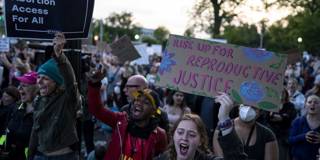OnPoint Subscriber Exclusive
Longer Reads provide in-depth analysis of the ideas and forces shaping politics, economics, international affairs, and more.

Abortion and Reproductive Rights Are Economic Issues
In the US states with the strictest abortion restrictions, children are more likely to be poor, to drop out of school, and to die young, and lack of access to contraception means that babies are more likely to be born to unmarried mothers. In the United States and elsewhere, reproductive freedom is a cornerstone of economic prosperity.
BERKELEY – In a recent television appearance, Michigan Governor Gretchen Whitmer highlighted an all-too-often unrecognized reality: reproductive rights are an economic issue – and not only for women. “The most important, profound decision a person will make, especially a woman, or family, is whether and when to bear a child,” she noted. “So, this is about our personal economy. This is about our collective economy. How can women get into the workforce if they cannot make their own decisions about whether or when to bear a child or access health care?”